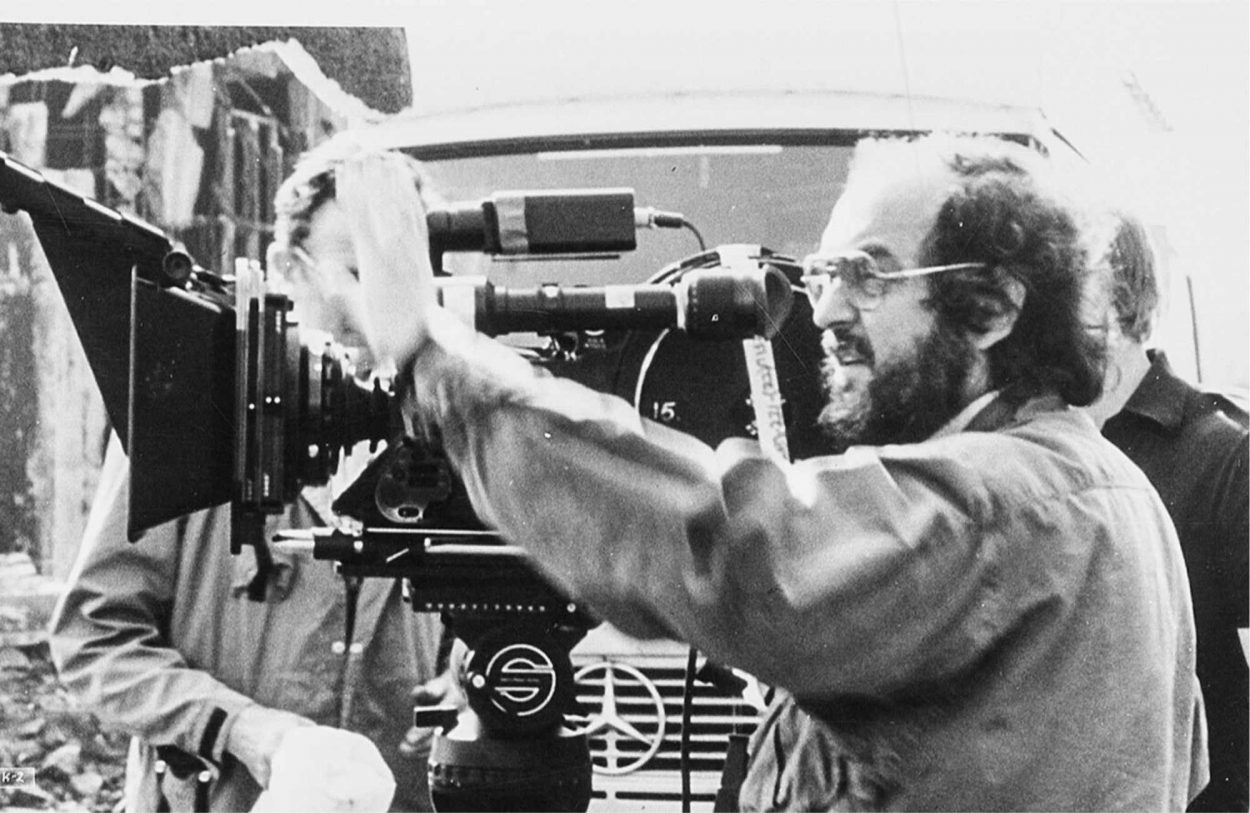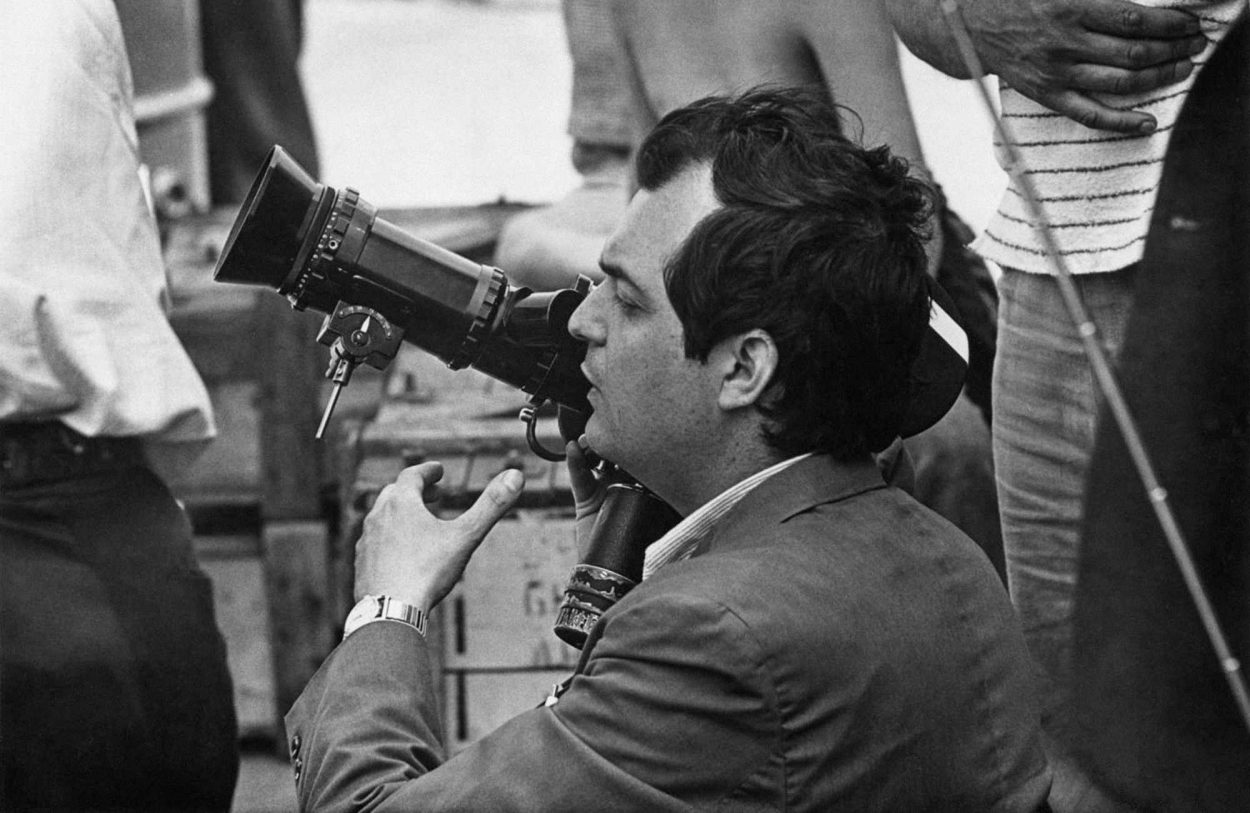If you’re a fan of John Frankenheimer’s Seconds (1966) or Rod Serling’s The Twilight Zone (1959-1964), then George Seaton’s wonderfully paranoid 36 Hours (1964) will thrill you. Seldom screened theatrically, Los Angeles will be getting the unique opportunity to watch 36 Hours at the New Beverly in 16mm alongside another genuine rarity, Darby’s Rangers (William Wellman, 1958), James Garner’s big screen debut. This pair of films is certainly on the “December Don’t Miss” list!
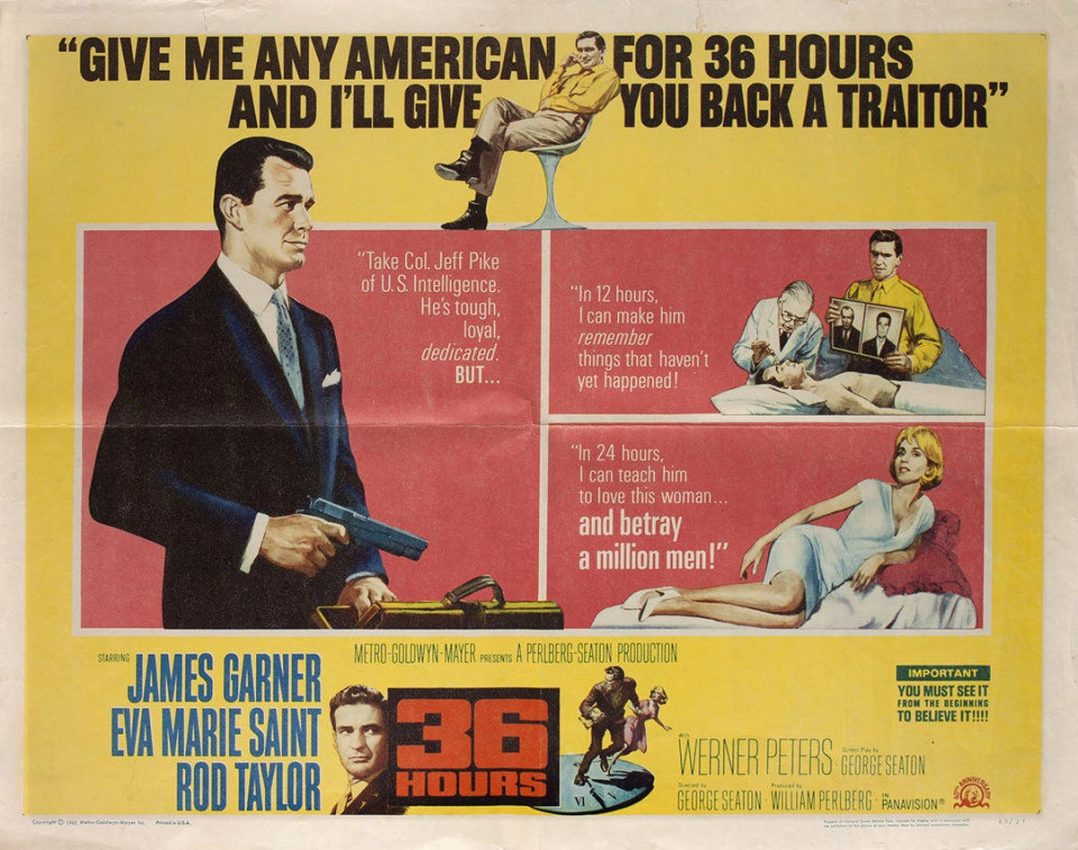
36 Hours has been called everything from a spy thriller to a WWII paranoia piece, but it is a much deeper work. Major Jefferson Pike (James Garner) is an officer in the US military traveling to Lisbon to meet with a double agent a few days before D-Day. On his way, he is drugged and kidnapped by Germans and taken to a fake US Hospital where he is led to believe that he has been in a coma for years. Instead of it being 1944, it is now 1950. He has a sympathetic new doctor, Major Walter Gerber (Rod Taylor) and a beautiful Nurse, Anna Hedler (Eva Marie Saint), both of whom are really just Germans in disguise. They have (you guessed it) 36 hours to try to tease the details about the D-Day landing from him, without letting him know that he is being set-up.
Aside from 36 Hours being thrillingly skin-crawly, the look of the film should remind you of a good Serling bingewatch. George W. Davis, art director for the entirety of The Twilight Zone, was also the art director for 36 Hours. So if the imagery is reminiscent of the Twilight Zone landscape, it’s due to Davis heading up the visual schemes.
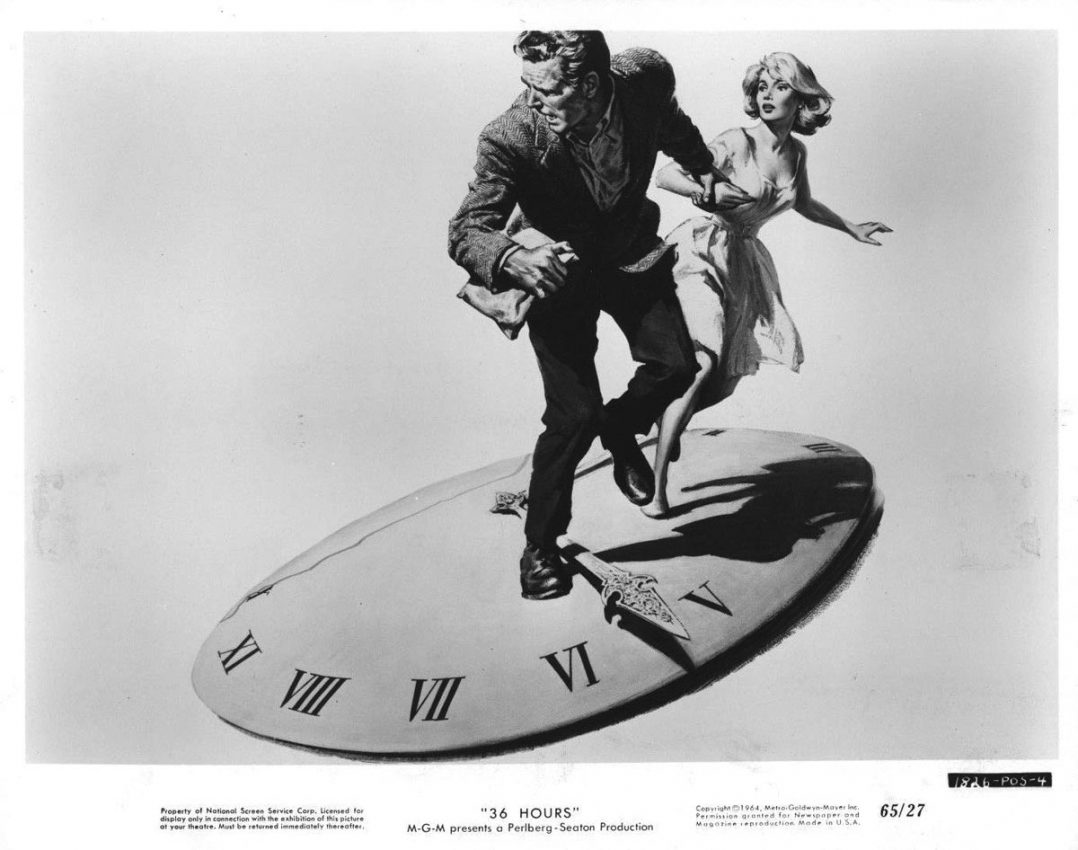
Most sources report that the film was an adaptation of a short story written by Roald Dahl, published in Harper’s Magazine in 1944. The amount of money paid to Dahl for his work varies depending on what reference you view and almost all simply state, “the property was bought by MGM.” According to more in-depth Roald Dahl-based materials, the sale of the rights was not this amicable. Patricia Neal, Dahl’s wife, had shown him George Seaton’s script for 36 Hours and commented that it was rather close to his short story, “Beware of the Dog.” While there are distinct similarities, it wouldn’t be reaching to say that Seaton’s screenplay could easily have been conceived on its own, without Dahl’s influence. Dahl, however, did not see it that way. He was quite a grumpy person (to put it nicely) and he disliked Hollywood. So if the movie/TV business was trying to cash in on his writing without him getting paid? Well, not on Roald’s watch!
Dahl instructed his agent, Mike Watkins, to go after MGM for a chunk of change. In Donald Sturrock’s biography of Roald Dahl, Watkins received several letters where Dahl rejects initial MGM offers and demands that his agent pursue a better deal. He tells Watkins, “This is a big matter for me. That is why I am making such a song and dance about it. It is not often in a lifetime that a storywriter has a full movie based on his story. He must, therefore, get (for his children) all he possibly can out of it. Every extra thousand counts…I think you could tell them that I am in a fighting mood about all this (which I am) and that I intend to get at them or the writer in some way or another if they don’t come through.” Dahl didn’t end up having to go beat everyone at MGM up (as much as it sounded like he wanted to). Ultimately, they agreed upon an amount and deposited the money directly into his children’s trust account, plus gave him a credit as the originator of the story.
It is worth reading “Beware of the Dog.” It is a tremendous piece of literature, as most of Roald Dahl’s writing is. Certainly not for children, but it’s 100% a reflection of Roald Dahl’s experiences in the R.A.F and his own world-weary cynicism. Whether George Seaton actually centered his script off the Dahl original is debatable. But Dahl got credited and his kids got paid, so it all worked out.
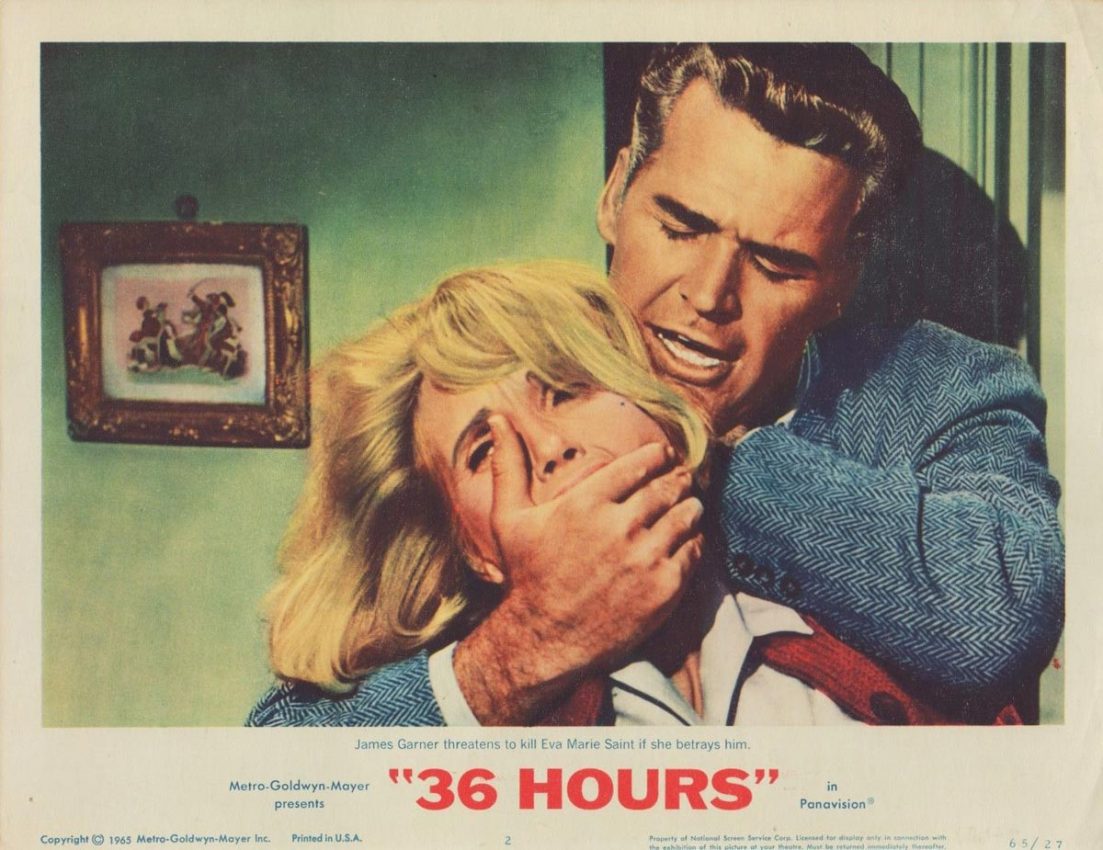
Selling itself largely as an innocuous “spy thriller,” 36 Hours reveals the sickeningly real atrocities of WWII, something that cinema was hesitant to do previously. Just a few years earlier Judgment at Nuremberg (Stanley Kramer, 1961) had bravely utilized real concentration camp footage. This paved the way for a more penetrating study of Eva Marie Saint’s character, Anna, as an Auschwitz survivor. The writers of 36 Hours did not shy away from exploring her physical and psychological manifestations of the Holocaust. Anna’s concentration camp tattoo and sexual abuse at the hands of the male guards is a significant part of the narrative. Deftly sewn to the primary plotline, this emotionally striking subplot is a radical one.
A character like Anna was new to Hollywood audiences. The idea of the marked body, the scraggily numbered arm, was threatening. It was almost too real. It reminded people, many of whom were not even a little connected to anyone who would have been in a camp, of the reality that human beings had been treated like sheep to the slaughter. These people had survived and were now living in polite society, perhaps right next door. It was almost more than most Americans could handle. The guilt factor would have been huge. Casting one of Hollywood’s beautiful Hitchcock stars in this role was daring.
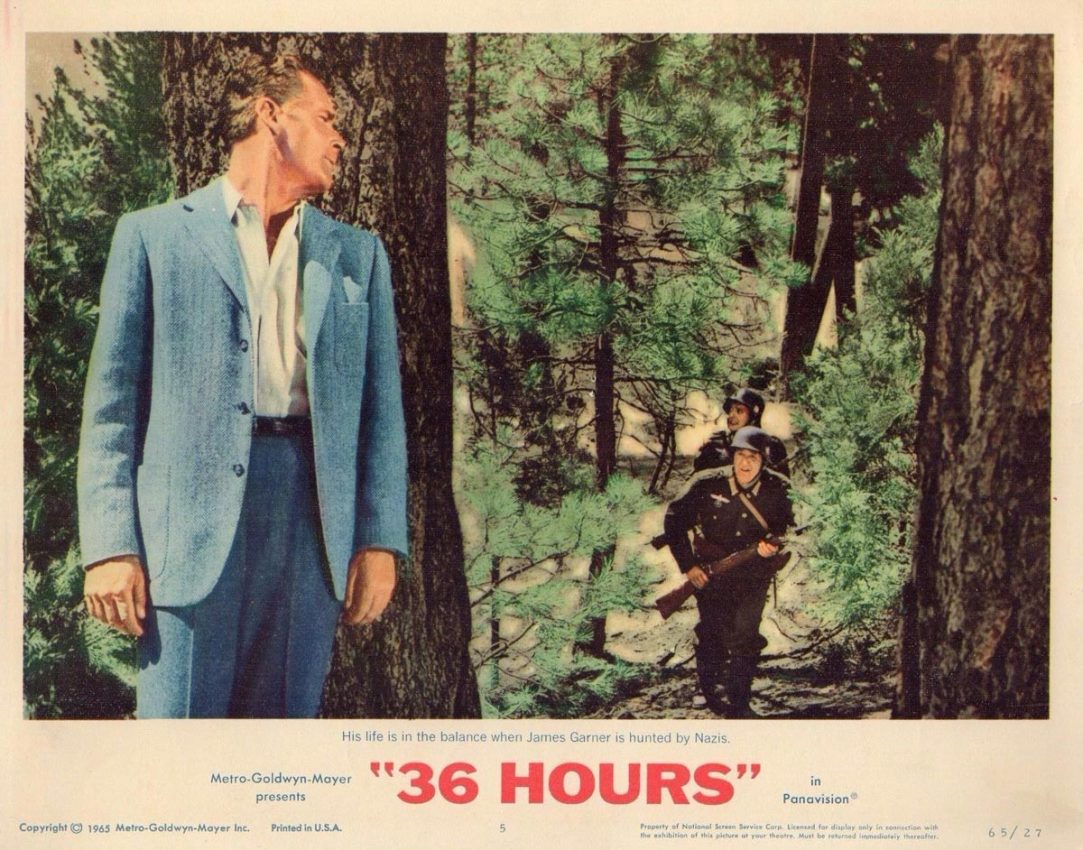
36 Hours was the first film James Garner produced under his newly formed company, Cherokee Productions. Many of Garner’s peers were also forming companies at the time, but Garner’s reasoning may have come from a slightly different place. Due to a recent scuffle with Warner Brothers, it’s possible Garner wanted a little more independence. When Garner was on the TV Show “Maverick,” Warners had suspended him during a writers’ strike. He sued for breach of contract and was told that the strike had been “beyond the studio’s control.” The court was informed that scripts WERE available and being produced at the time for the studio under fake names. James Garner won.
Garner invested his own money into 36 Hours and put a great deal of himself into seeing that the production went smoothly. Oddly enough, one of the problems they ran into was with the use of newsreels. According to Raymond Strait, a company called Transit Films of Germany claimed the rights to all German newsreels previous to May 8, 1945. It is unclear how Garner and his production team worked that one out, but they settled it and the newsreels appear. The film was shot in Portugal, Germany and Yosemite without incident. His co-producer, director and writer George Seaton, said about James Garner, “Any producer would like to make a movie starring Jim. He is what a pep pill takes when it’s tired…Jim Garner is that rarity among actors– one who cannot be typed.”
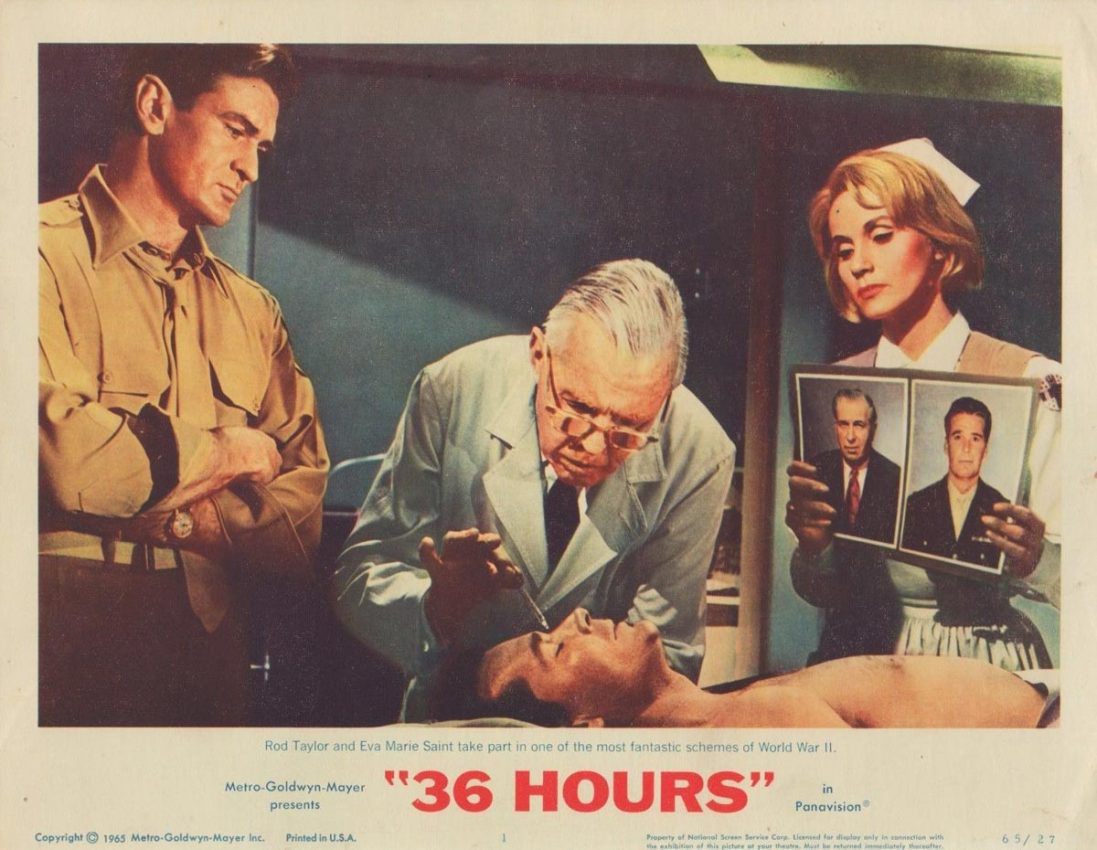
36 Hours is a unique film that gave three powerhouse performers like James Garner, Rod Taylor and Eva Marie Saint an opportunity to work together and produce a motion picture with a deep tone of anxiety and claustrophobia. It is a strong representation of the Cold War in cinema and the deeply secretive political consciousness entrenched in the United States during this time. Although the film takes place during WWII and centers on Nazis, espionage tactics and the D-Day attack, the prime narrative studies the American obsession with psychiatry and brainwashing, both of which had come of age in the 1950s.
Emphasizing delusion and the ability to brainwash POWs through psychiatric means, 36 Hours is 100% Cold War film. Various scenes detail how to “turn” a soldier (at least by Rod Taylor’s methods) and discuss how often and well it has worked. Conversations of this type were precisely what the US were having off-screen in the 1950s. As documented in a NYT article from July 2008, Congress was convinced that many of the POWS returning from Korea were spies, having been brainwashed by the Chinese. The US Government actually believed that we brought back zombie operatives. While these men were very likely shell-shocked and horribly traumatized, they were not secret agents.
Utterly terrified of mind-control, our government began to try to figure out how they could do it. Because that makes sense, right? They started experimenting with LSD and other human behavior-enhancing drugs while the CIA built secret stations in formerly Occupied countries like Germany and Japan. These were “anything goes” environments (much like Guantanamo) where humans served as guinea pigs and they lasted well beyond the end of the Korean War. Inmates were used for drug-induced interrogation techniques and brainwashing exercises. The idea was not to “fall behind” the Soviets or the Chinese in what we thought were their brainwashing and mind control methods.
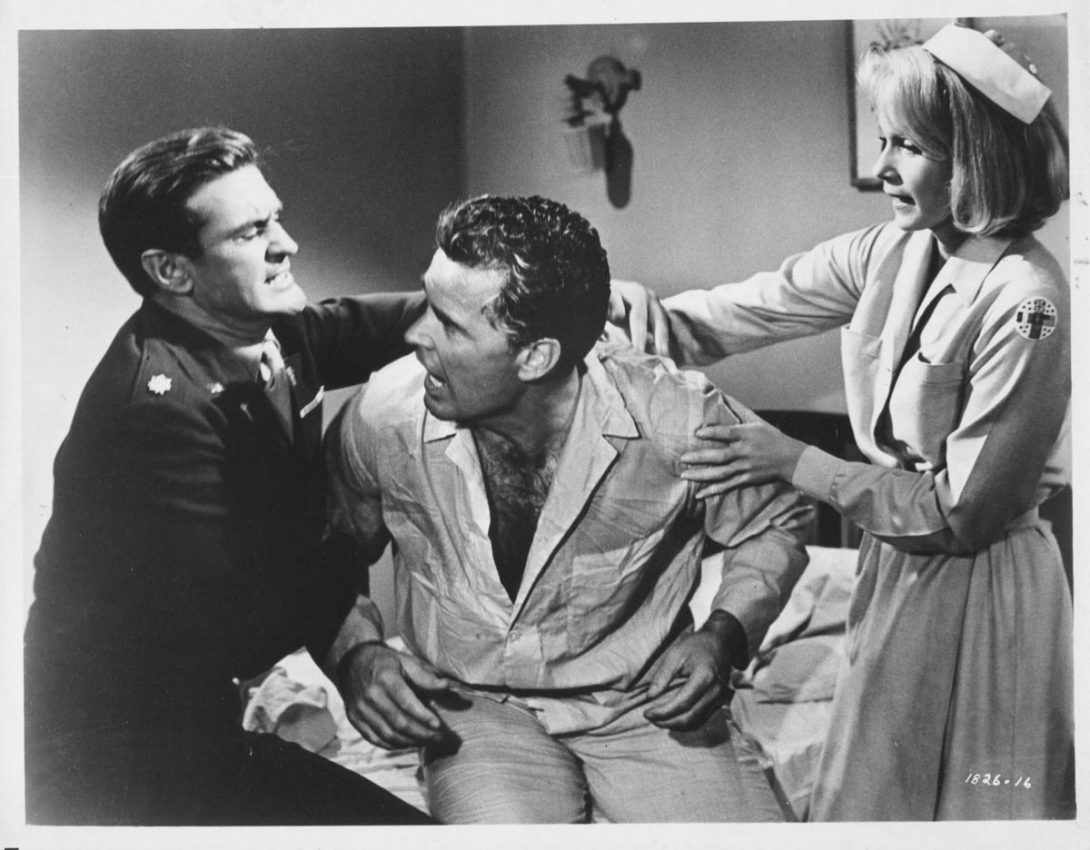
Of course, it’s super idiotic to torture humans. Like many things during the Cold War and the ‘50s, this was another Pointless Panic spawned by paranoia. As Tim Weiner writes, “Brainwashing was bunk: no secret weapon to control the human mind existed, America’s best experts concluded in the 1960s…the Communists used time-honored and terrifying interrogation tactics during the cold war.”
36 Hours is a thrill with great energy. Watching two of the most handsome film guys on screen together is worth the ticket price alone. And who doesn’t like a good suspense thriller? But there is something else to this film that is deeply fascinating. This is a movie that deals with the control of human beings on every level- from physical to mental. It examines prisons and torture and looks at patriotism and mind control. Much like the underlying theme of the film, this movie is not all that it appears to be and that is why it is such a rich piece of James Garner’s oeuvre.

